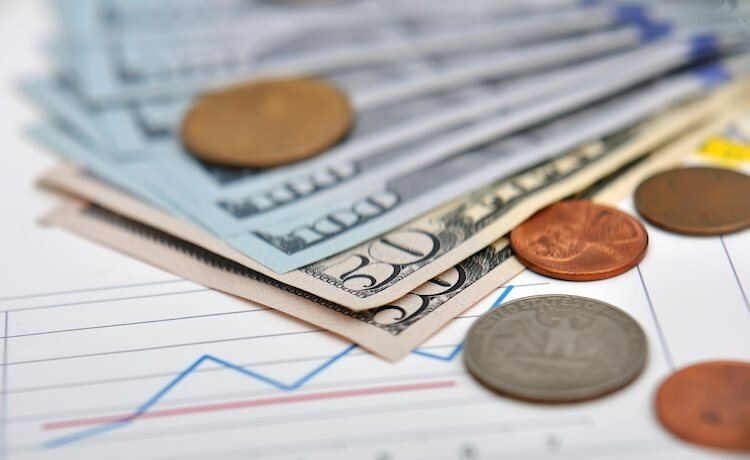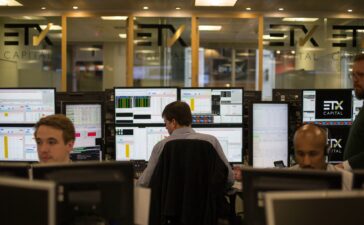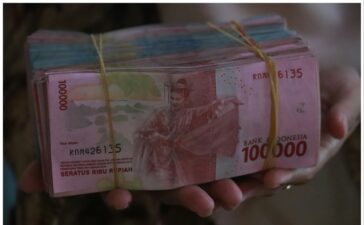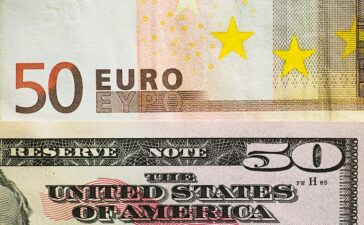- Stabilization in risk sentiment lends support to the USD despite lack of fresh fundamentals.
- Fed officials paint an optimistic picture of the US labor markets despite slow job growth.
- Market adjusts easing expectations; first rate cut expected in September with slightly lower odds.
The US Dollar (USD), measured by the US Dollar Index (DXY), showed sideways movement above the 103.00 level in Friday’s session. This comes amid stabilized risk sentiment and flat trading in US stock index futures following Thursday’s rally, with the 10-year US yield remaining around 4% early in the day.
Despite adjustments in market expectations for future monetary policy decisions, the US economic outlook continues to indicate growth above trend, suggesting premature market anticipation for aggressive easing.
Daily digest market movers: US Dollar stable as Fed officials highlight healthy labor market
- Hints on the labor market were provided by Federal Reserve (Fed) officials who shared views that the market is not dire despite slow job growth.
- Barkin noted that businesses are managing headcount through attrition or slowing hiring, but not laying people off, indicating cautious but not panicked market behavior.
- Schmid reaffirmed that inflation is almost within the required range and that the strength of the economy will determine the policy path.
- Goolsbee, however, warned that it’s important to determine whether the job market cooling is a temporary or ongoing event.
- The weekly jobless claims data also helped calm markets, with initial claims coming in lower than expected at 233K versus an expected 240K.
- Market pricing suggests less than 10% odds of an immediate cut and around 80% odds of a cut in September. These estimates indicate that markets are still fully pricing in 100 basis points of Fed easing by year-end, as well as 175-200 points of total easing over the next 12 months.
DXY technical outlook: Bearish bias persists as buyers struggle for significant movement
The DXY outlook remains bearish, with buyers struggling to make a significant move. The index is still operating beneath the 20, 100 and 200-day Simple Moving Averages (SMAs), confirming an overall bearish bias.
The momentum-based Relative Strength Index (RSI) is still below 50, indicating continued selling pressure, while the Moving Average Convergence Divergence (MACD) continues to print lower red bars. Despite the week’s gains, the overall technical outlook has not significantly improved, with potential for a correction still observed.
Supports: 103.00, 102.50, 102.20 Resistances: 103.50, 104.00
US Dollar FAQs
The US Dollar (USD) is the official currency of the United States of America, and the ‘de facto’ currency of a significant number of other countries where it is found in circulation alongside local notes. It is the most heavily traded currency in the world, accounting for over 88% of all global foreign exchange turnover, or an average of $6.6 trillion in transactions per day, according to data from 2022. Following the second world war, the USD took over from the British Pound as the world’s reserve currency. For most of its history, the US Dollar was backed by Gold, until the Bretton Woods Agreement in 1971 when the Gold Standard went away.
The most important single factor impacting on the value of the US Dollar is monetary policy, which is shaped by the Federal Reserve (Fed). The Fed has two mandates: to achieve price stability (control inflation) and foster full employment. Its primary tool to achieve these two goals is by adjusting interest rates. When prices are rising too quickly and inflation is above the Fed’s 2% target, the Fed will raise rates, which helps the USD value. When inflation falls below 2% or the Unemployment Rate is too high, the Fed may lower interest rates, which weighs on the Greenback.
In extreme situations, the Federal Reserve can also print more Dollars and enact quantitative easing (QE). QE is the process by which the Fed substantially increases the flow of credit in a stuck financial system. It is a non-standard policy measure used when credit has dried up because banks will not lend to each other (out of the fear of counterparty default). It is a last resort when simply lowering interest rates is unlikely to achieve the necessary result. It was the Fed’s weapon of choice to combat the credit crunch that occurred during the Great Financial Crisis in 2008. It involves the Fed printing more Dollars and using them to buy US government bonds predominantly from financial institutions. QE usually leads to a weaker US Dollar.
Quantitative tightening (QT) is the reverse process whereby the Federal Reserve stops buying bonds from financial institutions and does not reinvest the principal from the bonds it holds maturing in new purchases. It is usually positive for the US Dollar.

















